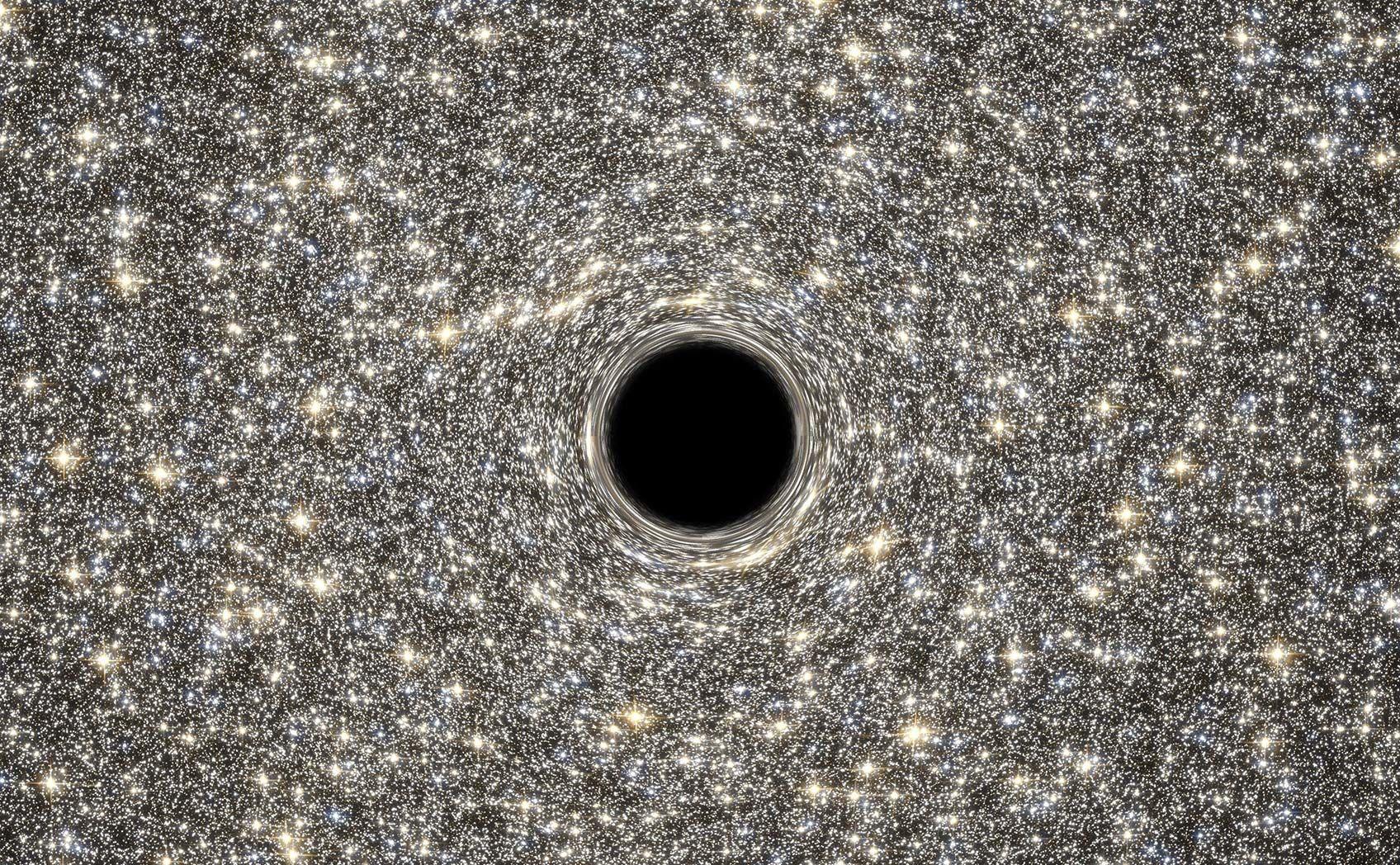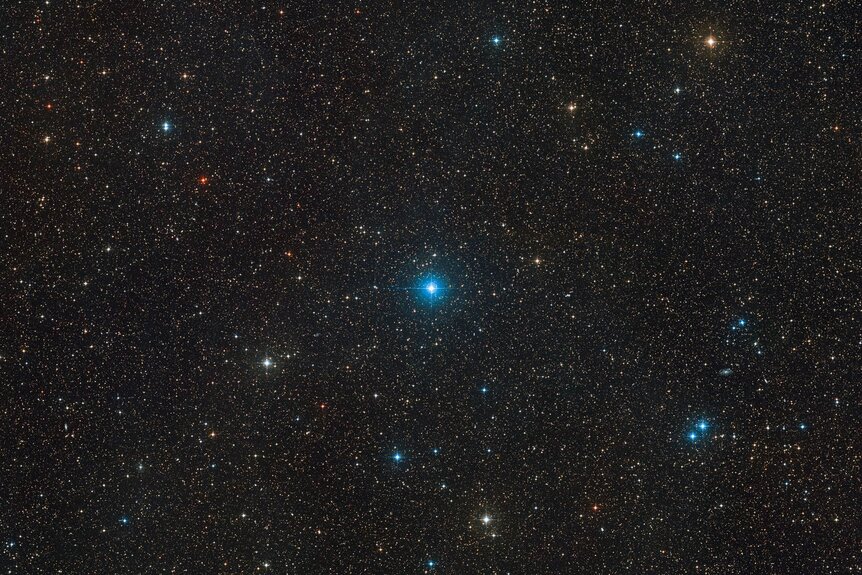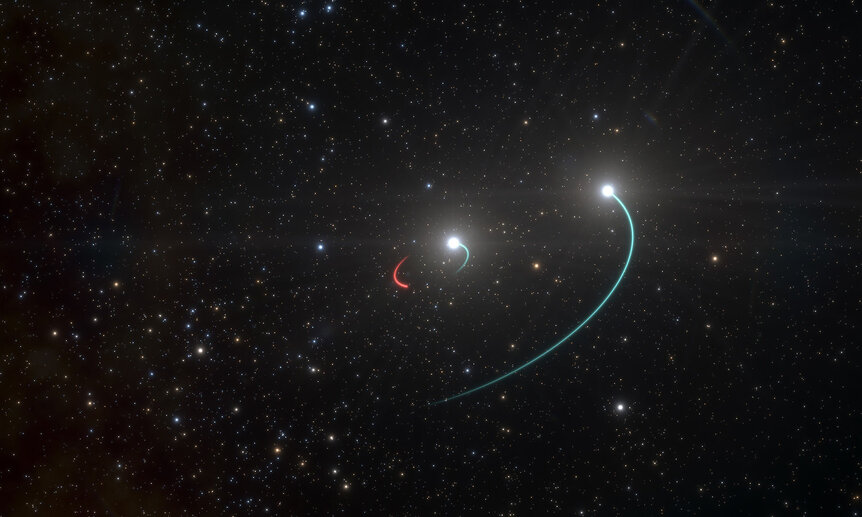Create a free profile to get unlimited access to exclusive videos, sweepstakes, and more!
Astronomers find the closest known black hole to Earth!

Astronomers have accidentally discovered the closest known black hole to Earth, and it beats the old record by quite a bit: This one is only about 1,000 light years away (the previous record holder is probably about 3,000 light years away). In a galaxy 120,000 light years across that’s pretty close!
To be clear, and because I know a lot of people get anxious about such things: This black hole is way too far away to hurt us in any way. In fact, the reason it's been undiscovered for so long is because it's so placid!
It was found because it's part of a multiple star system. The Sun is a solo star, but a large fraction of stars in the galaxy are in multiple systems: binaries, trinaries, and so on. Some systems even have seven stars in them.
HR 6819 was a known binary already, though a weird one. The two stars are close enough together that from Earth they blend into one (like the headlights on a distant car on the highway look like a single dot). Both stars are what we call B type stars: hotter, more massive, bluer, and more luminous than the Sun. However, while one is what we call a main sequence star like the Sun — still fusing hydrogen into helium in its core — the other star is a giant, meaning it's nearing the end of its life. It's used up the hydrogen in its core and is now fusing helium into carbon.
This binary B star system is bright (it’s actually visible to the naked eye, but you have to live in the southern hemisphere to see it) and close-by, so some astronomers decided to take a closer look to see what they could find out about it. And that's when things got weird.
By taking a spectrum of the stars, breaking their light up into thousands of individual colors, astronomers can measure their motion. But what they found is truly odd: The giant star appears to be in a 40-day orbit, but the other B star shows no signs of also being in a 40-day orbit! It shows little motion at all, indicating it’s pretty far out from the giant star, and orbiting it slowly.
So what's causing the 40-day orbital motion of the giant star? By examining the spectrum more closely, they could see that's in a circular orbit around an object that has something like 4–6 times the mass of the Sun. However, a star that massive would be easily seen in the observations. None is. So whatever this thing is, it's massive, but dark.
There's only one thing in the Universe we know of that fits that bill: a black hole. Nothing else can be that massive but not shine at all.
So to give you a clearer picture of the system: The B giant star and the black hole orbit each other at a distance of around 35 million kilometers (closer than Mercury orbits the Sun), taking 40 days, and the other B star orbits much farther out, though how far out isn’t known.
That means it's not a binary system, it's a trinary.
Discovering a black hole this way is pretty unusual. Normally we find them because they’re actively eating material; that stuff gets very hot and blasts high-energy light like X-rays. But X-ray observations show nothing at all from this system. The black hole is truly dark.
Not many systems like this are known. A few months ago some astronomers made a stir when they announced a very similar system, called LB-1, except they claimed the black hole they found had 70 times the mass of the Sun, a huge number for such a beast. It turns out they made some assumptions that likely don't hold, and the black hole is probably much less massive that that.
These kinds of systems, called massive hierarchical triples (a binary orbited by a third star farther out), are interesting, in that we're not exactly sure how they form. A black hole forms when a massive star explodes, which tends to wreak havoc on a system. It's possible in this case the star lost a lot of mass slowly via a stellar wind (like the solar wind but much stronger), allowing the system to remain stable before it blew. But the details on how the system formed and evolved aren't clear.
That makes this an important find all on its own, even without it being a black hole distance record buster.
The distance to this star system isn't precisely known, but is likely between 1,000 and 1,200 light years. That's interesting because that's relatively close to us. If there were only one black hole in the whole galaxy, statistically you'd expect it to be halfway across the galaxy from us, about 50,000 light years away. This one being so much closer implies strongly that there are lots more out there. And because the vast majority of them will be quiet — not eating and therefore not glowing — they could be closer yet.
Models of star birth and death indicate the galaxy should have a billion or so black holes in it! That means the actual closest one, as yet undiscovered, is probably much closer to us still. However, again, there's nothing to worry about. The Earth has been around for over 4 billion years. If black holes got close enough to eat us, it would've happened billions of years ago. Space is big, and even if a quiet one were only a dozen light years way it wouldn't have an affect on us.
So this is a great discovery! A weird system, an accidental black hole, and a record breaker. I hope soon we find one even closer to us; because they're usually so far away (and dark) they're hard to study. Having one closer, but still at a safe distance (hey, I'm no fool, close is good but close enough is better), would be extremely cool.





























